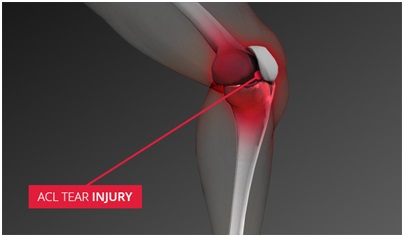Anterior cruciate ligament reconstruction is a surgical tissue graft replacement of the anterior cruciate ligament, located in the knee, to restore its function after an injury. The torn ligament is removed from the knee before the graft is inserted in an arthroscopic procedure. ACL injuries are common among people who play sports. The ACL (anterior cruciate ligament) is a band of tissue within the knee. It gets damaged when it stretches or tears. This can happen if you turn sharply or move suddenly while you’re running or jumping. Get ACL surgery at Jyoti nursing home from the finest doctors.
Your doctor will remove the torn ligament from your knee and replace it with new tissue. The goal is to get your knee stable again and give it the full range of motion it had before you got hurt.
Doctors typically use arthroscopic surgery on your ACL. This means they insert tiny tools and a camera through small cuts around your knee. There’s less scarring of the skin with this method than with open-knee surgery.
During arthroscopic ACL reconstruction, the surgeon makes several small incisions-usually two or three-around the knee. Sterile saline (salt) solution is pumped into the knee through one incision to expand it and to wash blood from the area. This allows the doctor to see the knee structures more clearly.

ACL Tear Injury
The surgeon inserts an arthroscope into one of the other incisions. A camera at the end of the arthroscope transmits pictures from inside the knee to a TV monitor in the operating room.
Surgical drills are inserted through other small incisions. The surgeon drills small holes into the upper and lower leg bones where these bones come close together at the knee joint. The holes form tunnels through which the graft will be anchored.
If you are using your own tissue, the surgeon will make another incision in the knee and take the graft (replacement tissue).
The graft is pulled through the tunnels that were drilled in the upper and lower leg bones. The surgeon secures the graft with hardware such as screws or staples and will close the incisions with stitches or tape. The knee is bandaged, and you are taken to the recovery room for 2 to 3 hours.
During ACL surgery, the surgeon may repair other injured parts of the knee as well, such as menisci, other knee ligaments, cartilage, or broken bones.
Once you recover from the anesthesia, you'll be allowed to go home later that same day. Before you go home, you'll practice walking with crutches, and your surgeon may ask you to wear a knee brace or splint to help protect the graft.
Before you leave the hospital, you will receive instructions on when you can shower or bathe, when you should change dressings on the wound, and how to manage post-surgery care. To reduce swelling and pain in the days immediately following your surgery, follow the R.I.C.E. model of self-care at home: